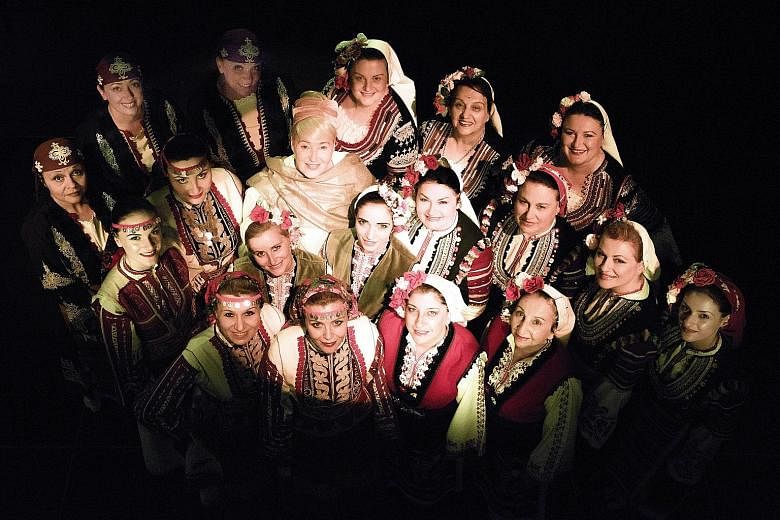NEW YORK • Should one tinker with a formula that has proven commercially sound? For the record, an album by an all-female Bulgarian choir singing in a 1,000-year-old style sold a startling 500,000 copies in the United States 31 years ago.
The breakthrough of the group's self-titled album, Le Mystere Des Voix Bulgares (The Mystery Of The Bulgarian Voices), coupled with the release of Paul Simon's Graceland, helped usher in a "world music" movement.
A follow-up album from the women bagged a Grammy in 1989 and they toured to sold-out halls around the world.
"The whole appeal was in their a cappella singing," said Mr Robert Hurwitz, who paid only US$8,000 (S$10,800) to license the original Le Mystere album in the United States for Nonesuch, the label he then led.
Now, after more than two decades away from the studio, the women are returning - but with a sound that is not quite so pure. The comeback release, BooCheeMish, matches the choir's folkloric harmonies to multitudes of instruments, not all traditional.
It also includes collaborations with a singer-songwriter who comes from a wholly different style and culture: Australia-born Lisa Gerrard of Dead Can Dance.
The man who worked on arranging and composing the new music, Petar Dundakov, knows he is about to face considerable scepticism from old fans, but is undaunted.
"We want to broaden the sound to find a new audience," he said. "We don't want to stay in a museum. The deep question is, can you move folklore forward?"
Gerrard emphasised that she took pains not to corrupt the women's essential sound. "We're walking towards them, not the other way around," she said. "If anybody is changed by this, it's me."
The choir actually began changing how Western listeners heard harmonies far earlier than the 1880s.
In 1966, a recording from the choir, on which the women performed updated arrangements of traditional folk tunes from conductor Filip Kutev, was released on Nonesuch's Explorer series.
It sold more than any other album on that imprint. Stars such as Frank Zappa, David Crosby and Graham Nash repeatedly marvelled at the women's vocal techniques in interviews, fuelling interest in the release.
Then, in 1975, Swiss ethnomusicologist Marcel Cellier released a cassette of the choir on his own label, based on field recordings he had made since the 1950s. That is the recording Hurwitz came across in a Parisian record store in the 1980s.
While he licensed the album for America, edgy British label 4AD snapped it up for that country, where it promptly sold more than 100,000 copies.
Gerrard, who recorded for 4AD at the time, first heard the women with that release. "They were like lights, full of hope against any adversity," she said. "They created a cathedral in the mouth."
Despite the exposure the women enjoyed at their peak, the collapse of the communist government in Bulgaria at the end of the 1980s put them in a precarious position.
Since 1952, the choir had been funded by the government, which gave it steady exposure on state-run TV and radio stations.
Forced to compete in the free market, many of the women had to take jobs teaching singing to scrape by. While the choir continued to tour over the last 20 years, there was not enough money for a recording until funding was found by the album's executive producer Boyana Bounkova.
To help flesh out the music, she hired Dundakov. He contacted a host of Western singers about collaborating with the choir, which included two women from the 1980s recordings. But only Gerrard proved suitable.
In her work with Dead Can Dance, as well as on solo releases and soundtracks for films such as Gladiator (2000), she had sung in an otherworldly style, often employing a self-created language.
Even so, Gerrard said, she had "a huge learning curve".
"I didn't try to copy them because I can't," she noted. "With Western Bel Canto singing, it's from the diaphragm, the belly and the head.
"With Bulgarian singing, it's from the chest. It's not a voice that's trained. It's a natural voice."
NYTIMES

